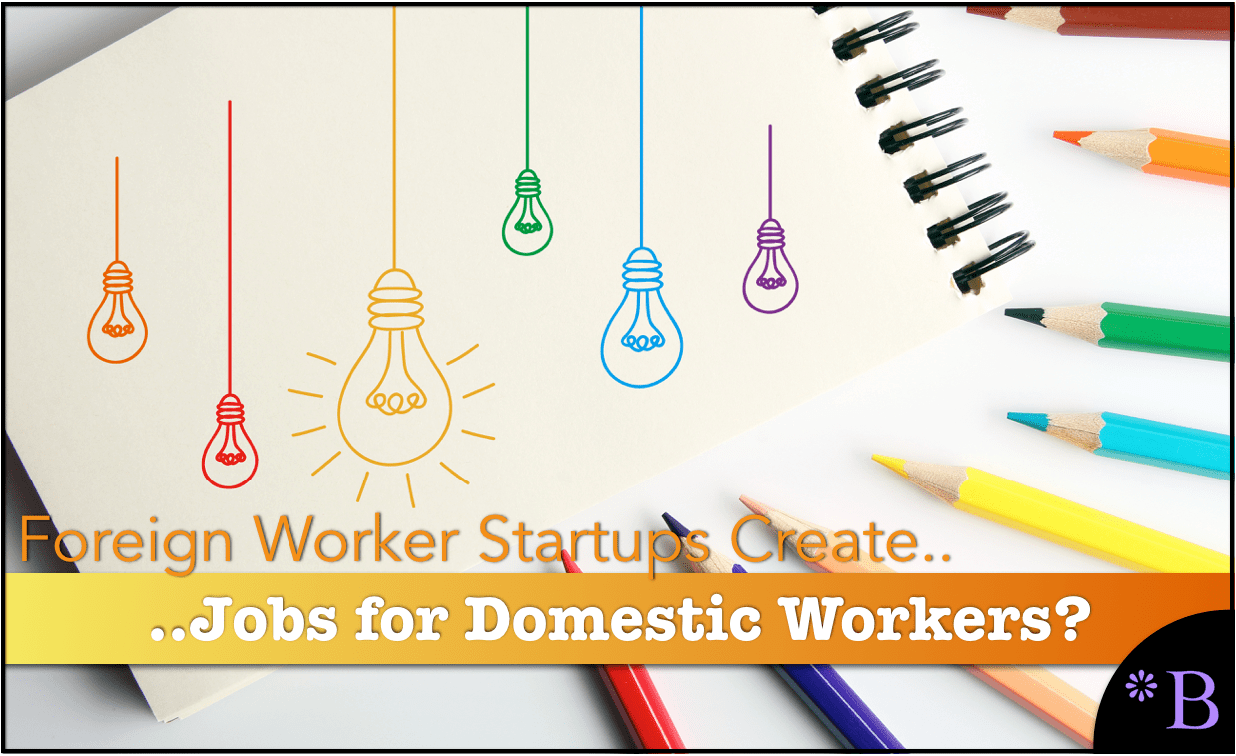How Most Foreign Worker Startups Do Not Hire US Domestic Workers
Executive Summary
- H1-B lobbyists and foreign workers have claimed that they create more domestic employment than they take because foreign workers create jobs with startups.
- We evaluate the accuracy of this claim.

Introduction
H1-B lobbyists want to present a pleasant fiction that all H1-B visa holders take jobs that are new and that there is no displacement of US workers.
Evidence for the actual amount of displacement found in the following quotation.
She finds that the Asian immigrants comprised 21 percent of the scientists and engineers in the technical workforce in 1990, but founded only 19 percent of new businesses during 1985–1989. By the year 2000, the Asian immigrant proportion of the technical workforce had grown to 37 percent,306 while their proportion of new business lagged behind at 29 percent, according to Saxenian’s data. Moreover, as Saxenian notes, the situation is even worse because the immigrant entrepreneurs—and for that matter, immigrant managers in non-immigrant—founded firms—tend to hire only from their own immigrant ethnic groups. Those jobs are largely not open to the general workforce. This can be seen quantitatively from, for instance, the study by B. Lindsay Lowell of Georgetown University, who found that “ . . . a study of the top 100 companies employing H-1Bs in 1998 shows that 60 percent of their CEOs had South Asian surnames.”308 Another researcher found that at Cadence Design Systems, a prominent computer-aided design (CAD) software firm, “foreign-born Chinese-American engineers may represent as many as 80 percent of the technical staff.”
“You’re seeing more and more firms that are homogenous ethnically, from the entrepreneur all the way down to the production worker,” said Edward Park, a University of Southern California sociologist who has visited dozens of Silicon Valley firms over the past decade . . . Workers say the tension is especially pronounced between engineers from India and mainland China. The Indian engineers coming on temporary H-1B work visas now outnumber the Chinese by 5–1 .309 – University of Michigan Journal of Law Reform
Is this the diversity that was promised? Homogeneous firms populated with individuals who are recent foreign workers who got into the country on what was temporary H1-B visas or student visas?
Conclusion
H1-B workers predominantly come from countries with large numbers of people who want to emigrate. If a startup by a foreign worker is successful in the US, it usually becomes merely another conduit to bring over more H1-B workers or to hire individuals from the person’s home country that are already in the US.
This is yet another lie that we have caught H1-B lobbyists and those that rely on H1-B labor stating. However, when H1-B lobbyists make statements, they have no concern for anything they say is true. They are paid to promote more and more H1-Bs by companies that make large amounts of money from H1-B labor.
References
http://heather.cs.ucdavis.edu/Mich.pdf